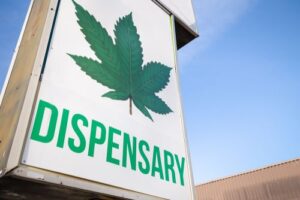You could call this the “high-on-life” high, in a sense.
And there are those types of highs that alter your consciousness by introducing a chemical into the body, rather than by producing the chemical from within by running or, ahem, sexual activity. These highs are achieved through any of a wide variety of substances.
Let’s take a look at caffeine, codeine, and cannabis.
Each of these three substances, besides all starting with the letter C, alter your consciousness and produce a sort of high, in the broad sense that a high is the result of a change in brain chemistry.
Caffeine
Caffeine, a stimulant, is said to be the most widely consumed psychoactive drug in the world. But caffeine, according to Wikipedia, is legal and unregulated pretty much everywhere, unlike the other two psychoactive substances, codeine and cannabis. “Psychoactive” is a scary word, isn’t it? But it simply means those drugs, like caffeine, that affect brain function and alter consciousness.
Committed to providing exceptional legal service to each and every client through integrity, compassion and experience.
Get StartedCodeine
Codeine, a narcotic derived from opium, is commonly used as a painkiller. Unlike caffeine, codeine is heavily regulated in the U.S. and in its purer form is a Schedule II controlled substance because of its apparently high potential for addiction. Yet the government has blessed our use of codeine, as long as it comes from a doctor’s prescription.
Cannabis
Another substance increasingly coming from a doctor’s prescription, or, in Arizona, a doctor’s written certification, is cannabis. Cannabis, unlike completely-legal caffeine and highly-regulated but legal codeine, is flat-out illegal in many areas of the U.S. and has been for years, besides the fact that caffeine and codeine are no less psychoactive than cannabis.
Like codeine, cannabis is considered by many to be a medicine. See this beginner’s guide to choosing the right strain of medical cannabis, with its repeated references to “medicine,” by the Patients Care Collective in Berkeley. And while you can use cannabis if you’re a qualifying patient in Arizona, like the use of codeine, cannabis is still treated as though it was worse than codeine.
Click to contact our abogados today
What’s the ‘Worst’ High?
Every single one of these ways to get high, from running to drinking coffee to smoking marijuana, is an example of what you may choose to do to alter your consciousness. Is it really any of the government’s business to continue to criminalize one of these over another?
Complete a Free Case Evaluation form now
The Big Questions
Why is mere possession of a small amount of cannabis for personal use in Arizona still a felony if you aren’t a qualifying patient? Why must you have something like cancer to make using cannabis acceptable? Why, when it’s likely that cannabis is likely much less addictive than the narcotic codeine, you can still go to jail for it?
As Phoenix criminal defense lawyers, we can’t fully answer these questions ourselves, but we can put the government to its proof in court.
Call or text 602-682-5270 or complete a Free Case Evaluation form



